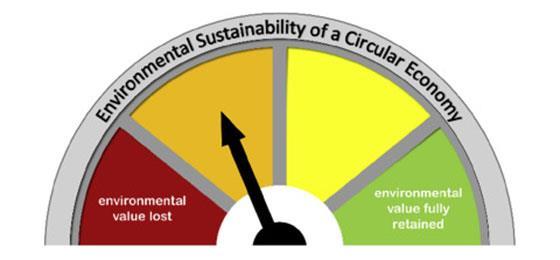How can we ensure that the economy does not only become circular, but also sustainable?
08.01.2020
We generally perceive the concept of a circular economy to be environmentally friendly by default. Today, quantitative indicators like recycling rates are often used to estimate the circularity of individual products, processes, firms or countries. However, the full environmental impact is usually not assessed, which may lead to badly informed and sometimes erroneous decisions.
To provide guidance for decision makers in politics and the economy, researchers of NRP 73 at the ETH Zurich propose an environmental-impact indicator that is complementary to mass-based indicators like recylcling rates. It measures the environmental value retained through reuse, remanufacturing, repairing or recycling. A value of 100% of this indicator means that the entire original environmental value of the material or product is fully preserved, while values below 100% indicate environmental value loss. The indicator was tested for packaging glass, newsprint and car engines.
The case study on newsprint highlights that in closed-loop newsprint recycling more environmental value is retained than in newsprint-to-cardboard recycling schemes. The highest environmental value can be retained if paper is processed to cellulose insulation material to replace the use of primary cellulose.
The application of the indicator may provide additional and sometimes unexpected insights, which can help to understand a system better and thus identify optimal solutions.
The article 'Measuring the environmental sustainability of a circular economy' from the project 'Towards a sustainable circular economy' was published Open Access in September 2019 in Environmental Sustainability Indicators.
